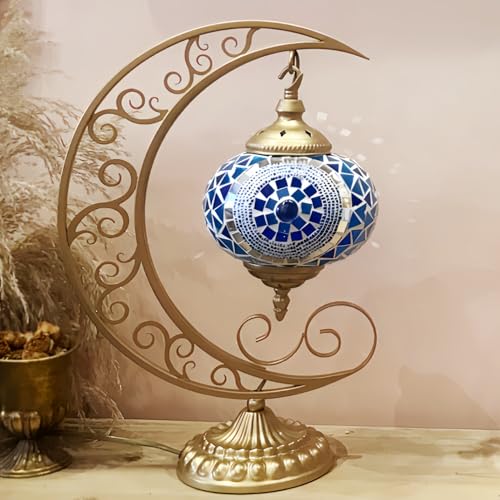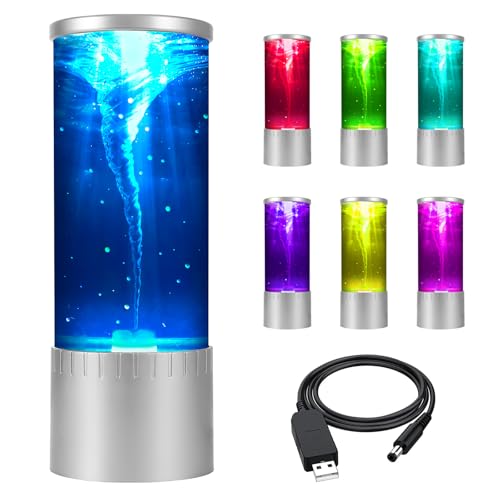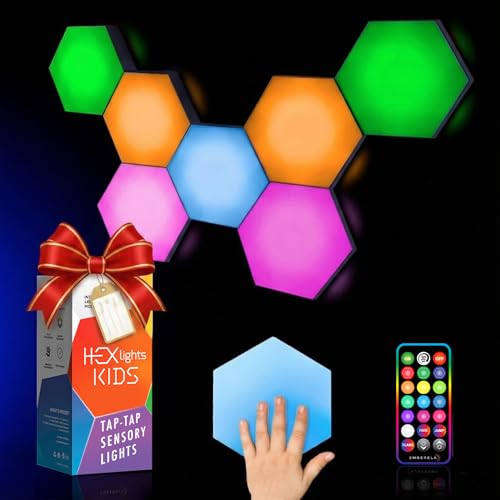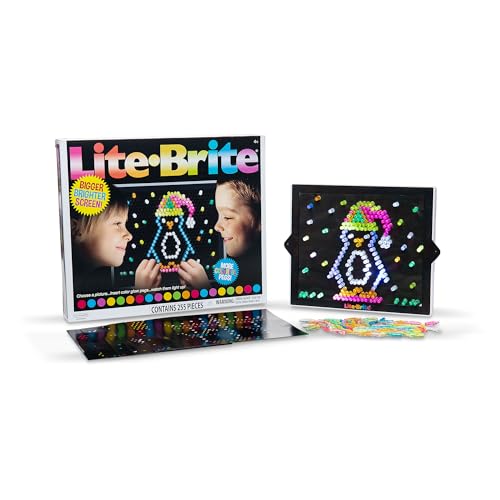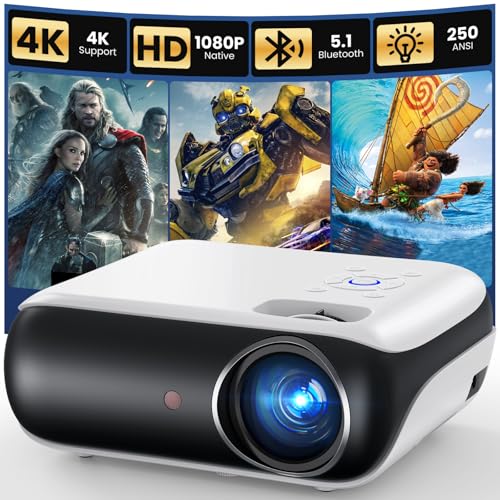Sensory lights are becoming more popular in sensory rooms and classrooms across the world. But what are they? And what benefits do they offer adults and children with autism or ADHD? In this article, I will discuss the different types of sensory lighting available, and explain the benefits of each one. I will also provide tips on how to choose the right type of sensory light for your needs. So, if you're looking to create a sensory room or improve the lighting in your classroom, read on!
How Sensory Lights Help with Calming and Focus
One of the main benefits of sensory lights is that they calm and focus individuals with autism and/or ADHD, as well as those with sensory processing disorder, Down syndrome, cerebral palsy, etc. These conditions can make it difficult for people to regulate their senses, manage their emotions, pay attention, and follow directions. Sensory lighting can help by providing a soothing environment that promotes relaxation and concentration.
The Benefits of Sensory Rooms
Studies show that sensory rooms have proven, measurable benefits. A study from Oregon found that students with sensory processing disorder (with or without a co-occurring condition such as autism or ADHD) were 56% more engaged in classroom activities after spending time in a sensory room.
Giving neurodivergent children and adults control over the environment in their sensory room is key. A study published in the National Autistic Society journal found that having control over changes in a sensory room was “associated with increased attention and reduced repetitive motor behaviors, sensory behaviors, activity levels, stereotyped speech, and vocalizations.” For this reason, many of the sensory lights we're featuring here are interactive or can be adjusted using a remote to meet your or your child's specific needs.
There isn't as much research about sensory rooms for autistic adults, but a literature review in the Journal of Mental Health Nursing found that sensory rooms reduced the distress level of patients in psychiatric hospitals.
Sensory lights are just one component of an effective multi-sensory room. For more ideas to create the ideal environment for yourself or your child, check out our articles on sensory swings, sensory chairs, fidget toys, fidget blankets, and chewelry.
Tips for Choosing the Right Sensory Lighting for Your Needs
When choosing the right type of sensory lighting for your needs, it is important to consider things like light intensity, color saturation, and ease of use. Autism-friendly lighting is usually associated with calming tones, but sensory-seeking children and adults may enjoy patterns and flashing lights. If you don't know your own preferences (common among late-diagnosed teens and adults who spent years trying to mask and suppress their neurodivergent traits) try a multifunctional light with a remote.
To get the most out of a sensory room, you should also be aware of the types of lighting to avoid. Some vary by individual — such as avoiding flashing lights if you/your loved one has co-occurring epilepsy — but one is pretty much universal. Fluorescents! Fluorescent bulbs are the enemy of people with sensory processing disorder, migraines… you name it. Many of us can see them flickering when neurotypicals can't. They can make concentrating at school or work next to impossible. They're just pure evil!
Types of Sensory Lighting
There are many different types of sensory lighting available, each with its own unique benefits. I've organized them by category and included a few examples of items I own or have tested at a neurodivergent friend's house.
Sensory Lights with Soothing Movement
Bubble Tubes and Lamps
A sensory bubble tube is one of the most calming autism-friendly lights you can choose for all ages, but especially for kids. Most sensory bubble tubes come with a remote control so you can set a solid color or adjust the speed of the color shift. Bubble tubes are a key component of an autism-friendly environment to create a fun and engaging sensory experience for any age. You can buy multiple bubble lamps or enhance the impact of a single bubble tube by placing it in a corner with mirrors around it. Some bubble towers come with optional plastic fish that can swim up and down with the movement of the water.
Jellyfish Lamps
Jellyfish lamps are another great choice for sensory rooms, as they mimic the soothing motion of real jellyfish swimming in water. These lights provide a soft glow that can be used to create a calming atmosphere. The quality of jellyfish lamps varies tremendously, but I've tested these two and they are the best options by size that are most likely to last for a few years without the motor breaking.
Lava Lamps
Lava lamps are a popular option for sensory lighting, as their wax oozes in a slow yet endlessly fascinating manner. I collect lava lamps and own 32 in total! They were a big special interest of mine for years and I still love them. One caveat — lava lamps are best for teens and adults who can understand their safety considerations. They are made of glass, get hot, and the contents would be toxic if ingested. They are not a safe choice for small children or people with intellectual disabilities who might grab or pull at them impulsively.
Tornado Lamps
These lamps have a small light bulb at the bottom and create a spiraling effect using air flow. They work well in sensory rooms, as they provide a mesmerizing visual display that can help with focus and concentration. They are a safe alternative to lava lamps as they don't get hot.
Interactive Sensory Lights
Touch Sensitive Modular Sensory Lights
These interactive lights let you control your sensory experience. They're fun for neurodivergents of all ages!
Lite Brite
Who doesn't love a Lite Brite? They encourage creativity and you can use your favorite colors that you find soothing. They can help kids with ADHD settle down and focus. I've included one option for kids and another for teens and adults. Note that Lite Brites aren't a good choice for young children or people with pica who might eat the small pegs.
Handheld Sensory Lights
Looking for portable sensory lights? You can take these anywhere and they double as stim toys.
Sensory Lights That Respond to Music
Music is a major ingredient in my “sensory diet” as an adult on the autism spectrum. Electronic music is my favorite. I use lo-fi beats to relax or defuse meltdowns before they get bad, and dubstep to pump myself up when I'm depressed or have to interact with lots of people. Lights and speakers with changing colors that go with the music enhance the experience, and might help you too.
Visual Stimulation for Sensory Rooms
Wall Projector
If your loved one on the autism spectrum has behavioral challenges and has a history of damaging TVs during sensory meltdowns, a projector hanging from the ceiling provides a safe alternative for them to enjoy their favorite programs.
Ceiling Light Projectors
Projection lights are a great option for autism-friendly multi-sensory rooms, as they can be used to create soothing patterns on the walls or ceilings. When I'm experiencing a panic attack or on the verge of a meltdown, I turn on my blue aurora borealis projector and it helps me calm down. Autistic children and adults often struggle with insomnia, and night sky and ocean projectors can help us fall asleep.
Table Lights
If you need a sensory light for an end table or to use as a nightlight, consider these options. I have the galaxy light and it's beautiful, affordable, and fits in well in your home as an adult.
High-End Sensory Lights for Adults
So you just found out you're autistic or have ADHD. Maybe you're self-diagnosed because finding a doctor that can test an adult is hard. Even if you did get an official diagnosis, treatment and support for adults can be difficult to access. You want to try some sensory stims without your home looking like a daycare center — but how?
I've listed quite a few lighting options that work for adults, but here are a few more to create a high-end sensory room that reflects your style.
What are your favorite sensory lights?
Let us know in the comments.
More Neurodiversity & Autism Resources in The Ability Toolbox
- Comfortable Autism Noise Canceling Headphones and Earplugs
- Why the Autism Puzzle Piece Is Bad, and What to Use Instead
- Autism T-Shirts and Clothing to Celebrate Neurodiversity Acceptance
- Sensory Swings for Kids and Adults with Autism or ADHD: A Guide
- Sensory Overload Self-Help Guide: Coping Tips to Help You Thrive
Hey I'm Olivia and I'm a proud Autistic woman. My special interests are cats, stim toys, and electronic music! I love to write and help other Autistic adults find ways to enjoy life in this LOUD world!






